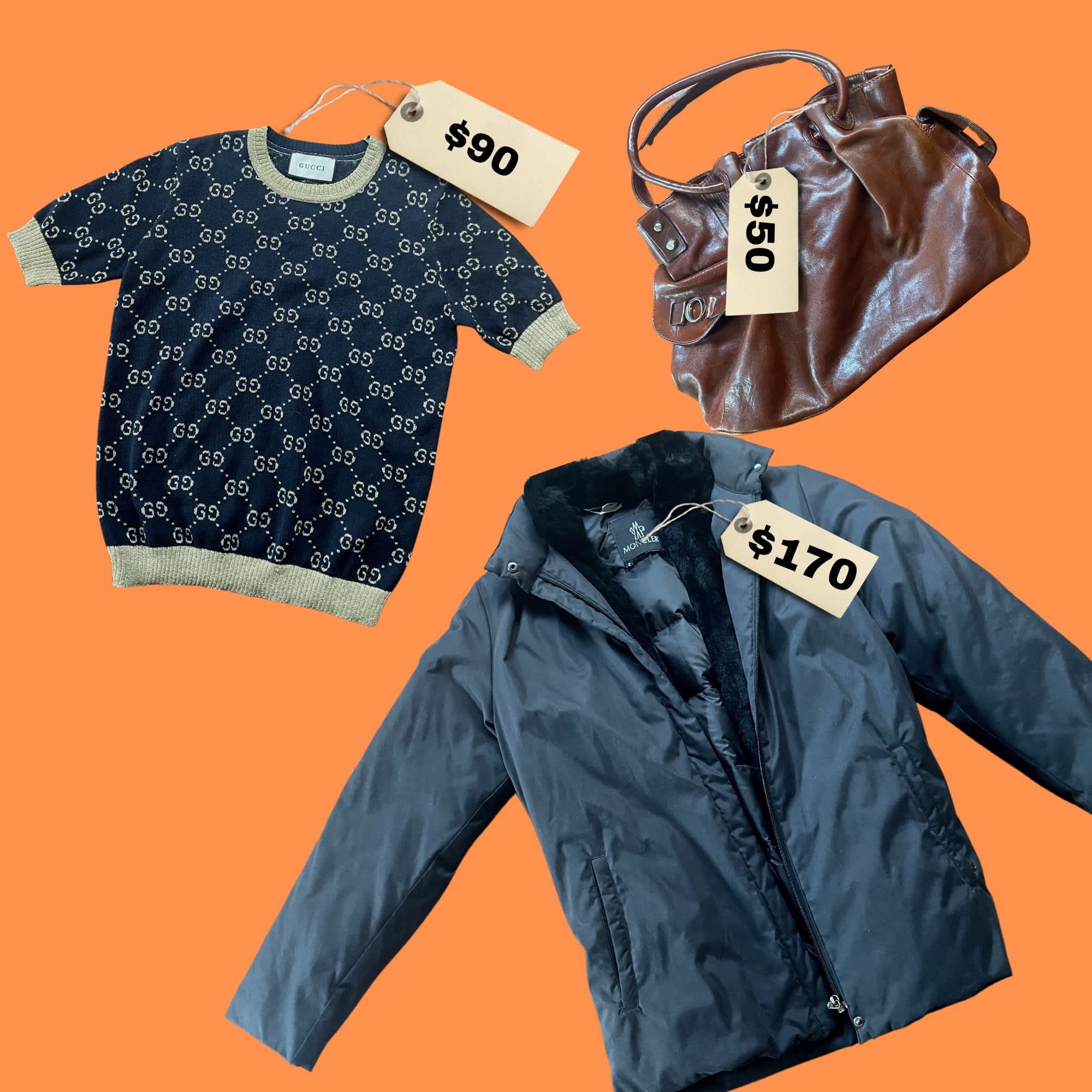
- POPSUGAR Australia
- Fashion
- Gen Z Are Paying Their Rent Selling Clothes Online – But How Easy Is It?
Gen Z Are Paying Their Rent Selling Clothes Online – But How Easy Is It?

We asked a Depop top seller.
I have two vices in life – beauty products and op-shopping. While I’ve turned the former into a career, I haven’t quite managed to monetise the other.
But whenever I share a find on Instagram, whether it’s a Gucci top or Valentino jacket, I get the same response: “You should start a Depop!”
The general consensus is that Depop is a super easy life hack – a way savvy Gen Zers are making a quick buck online. Insider reported that apps like Depop are driving $30 billion growth for the second-hand clothing market in the next ten years.
According to a Vogue Business article, in 2021, 90% of Depop users were under 25. Also in 2021, Etsy acquired Depop for $1.6 billion in a bid to connect with the Gen Z shopper.
For many, in the cash-strapped days of early Covid, Depop seemed like a financial horizon line. The NY Times Wirecutter blog ran a story “How Selling My Old Clothes on Depop Funded My Trip to Tokyo.” In the story the writer says: “Tired of constantly pinching pennies, I looked for a gig that wouldn’t require much labour or time but could still boost my income.” She describes Depop as “an easy way to make money with minimal human contact… and zero physical labour.”
Sounds Amazing, So How Easy Is It?
Meet Stella Morison, known on Depop as @cusponline. She’s a Depop top seller for whom second-hand retailing is a full-time job. When I ask her whether the perception that Depop sellers are out there making a killing, while the rest of us schlep, she laughs – “The term Depop girlie comes to mind!”
What’s a Depop girlie, you ask?? Urban Dictionary defines the term as “someone who takes all the cute and cheap clothes from thrift stores and sells them for an extremely inflated price on Depop or other resale apps.”
This sentence sums up millennials’ sceptical, and envious, relationship with Gen Z’s knack for monetising side hustles (research indicates that 42% of Australian Gen Zs have a side hustle).
I first became aware of Stella Morison when I spotted one of her finds on my housemate Elijah (one of the most stylish people I know). It was a slinky cut, diamanté encrusted T-Shirt, emblazoned with an image of Jessica Alba in full 00s aviator-wearing glory. It’s the kind FOMO inducing thrift find that defines Morison’s aesthetic — luxe, sexy and mildly ironic.
Stella Morison grew up trawling through markets with her mum and her sisters. Then, in high school, she started selling items to school friends via Instagram. At first, this was an easy way to clear out her wardrobe, but she quickly realised there was profit to be made.
“Where there is profit to be made, I am there!” Morison quips.
When Depop started, she hopped on that platform, and her business took off. Morison now rents a studio and has hired her first employee. She’s invited to speak to rising Depop stars on their Top Seller panels on a regular basis.
Morison says Depop has made retail accessible for a younger generation.
“I never would have considered setting up an online shop – I just wouldn’t have known how,” she said.
But with Depop’s easy user interface and Instagram-esque familiarity, Morison was able to start selling without what she refers to as “crippling imposter syndrome.”
Morison confirms my suspicion that you don’t fall into a full-time Depop career just because you’re good at op-shopping. As it turns out, full-time retailing involves both physical labour and a ton of social interaction — although most of the social interaction happens online. Morison breaks her weeks into days of activity.
The most time-consuming component is sourcing, which involves carting car-loads of finds from her suppliers to her studios. Clothes are then laundered, dried and photographed, images are edited, and captions are written. The whole process — from buying the garment to putting it up for sale — takes about a week. In between, Morison is constantly responding to customer enquiries, packing and shipping orders, and creating content for social media.
There are two main comments Morison gets when she tells people Depop is her full-time job, the first being that it’s easy.
“People really don’t understand the multiple levels of work that make a Depop business successful,” Morison says.
The second is criticism that is more complicated to unpack.
“Some people take issue with the buying and reselling second-hand clothes full stop,” Morrison says, explaining: “there is a perception that this takes away from a pool of affordable clothing for low-income earners”.
Above: Joely Malcolm wears @cusponline at AAFW
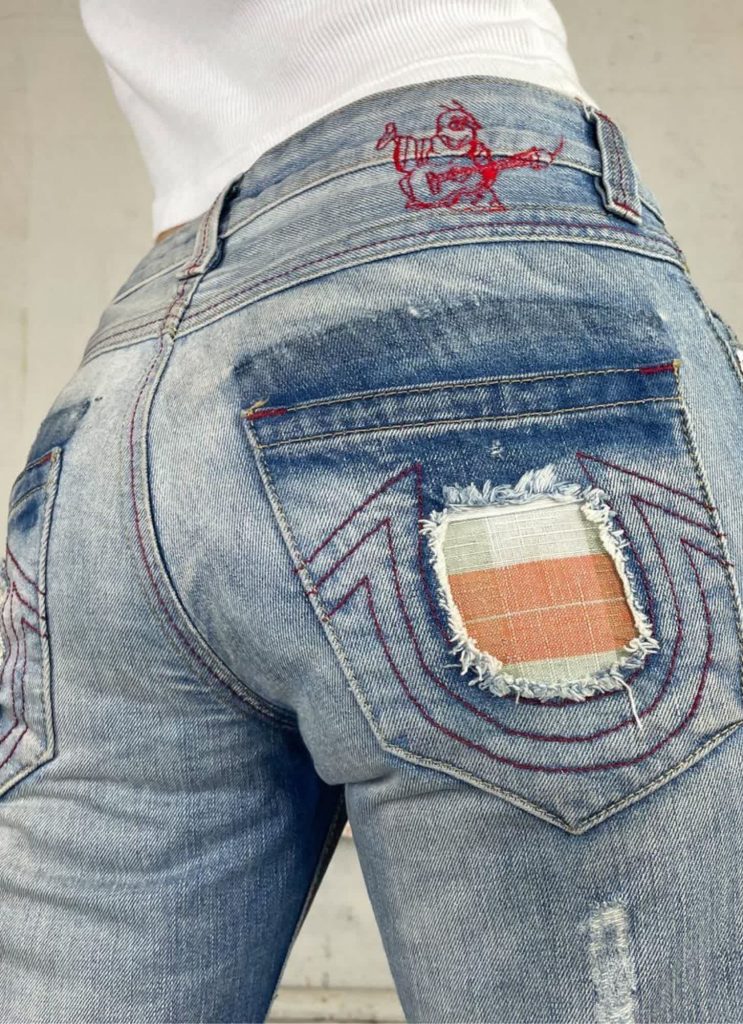
Morison sees things differently, and believes that this interpretation also misses what charity shops are about.
“When charity shops are retailing clothing, they are fundraising for critical issues, like housing,” she says.
Then, there’s the fact that while Gen Zs are highly engaged in movements like circular fashion, the majority of people still buy their clothes at major retailers.
“There are so many clothes in the world – and most of them won’t get a second life,” Stella says. “Curating them in an accessible way, while also giving money to the charities I source from feels like the most positive thing.”
So, if you want to be a Depop top seller, here are Stella Morison’s top Depop tips.
Create a Brand:
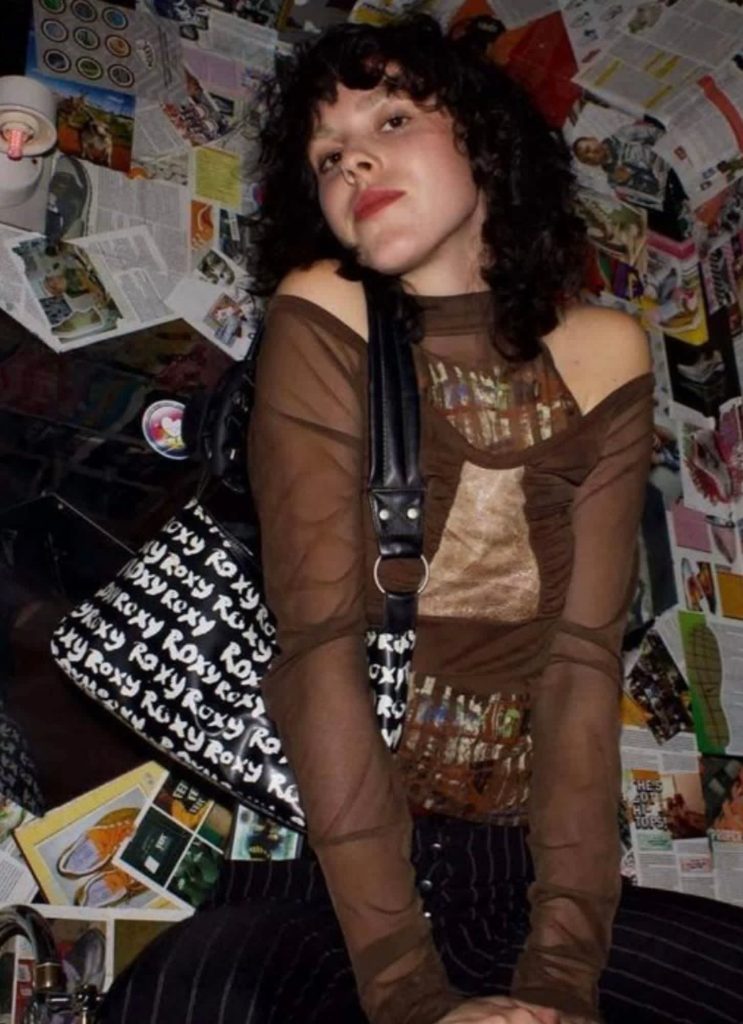
“My Depop was initially an extension of my personal style,” Stella explains, “but as my business grew, I noted things that sold fast, and also started proactively trend forecasting.”
Morrison says she looks to friends and social media apps like TikTok when she’s trend forecasting, and says TikTok is essential for building your brand.
“On TikTok, you see sub-cultures that might be outside your immediate social group,” she says. “It’s also, like it or not, a great way to create buzz around your brand, and connect with your customers in a more informal way.”
Finding your target customer is also essential, and that means defining the aesthetic of your online store. Stella likes to take an imagined character shopping with her.
“Whether it’s a friend, a hot, alt-girl at uni – thinking of a character when I’m sourcing keeps it from feeling like I’m just randomly buying stuff,” she says, adding that consistency is key when it comes to your aesthetic.
“People need to know what they’re getting when they come to you,” Morison explains. “If you stay consistent your target customer will find you.”
Be Money Savvy:
Your target customer should inform your pricing, Morison says.
Stella jokes that she sells to “the girls and the gays,” adding: “I definitely aim to keep things accessible for that group.”
While accessible pricing suits platforms like Depop where a younger clientele is shopping, Morison takes the financial component of her business very seriously.
“When I’m landing on a price I will look at quality, fabric, rareity – all of those factors,” she says. “If I find something really unusual that I haven’t come across I’ll do some research and see how other sellers are pricing items.”
A lackadaisical approach to reselling won’t do if you’re looking to make Depop a career.
“You need volume, scale and defined profit margins,” she says, “and an understanding of how to value your own time.”
Presentation and Accessibility:
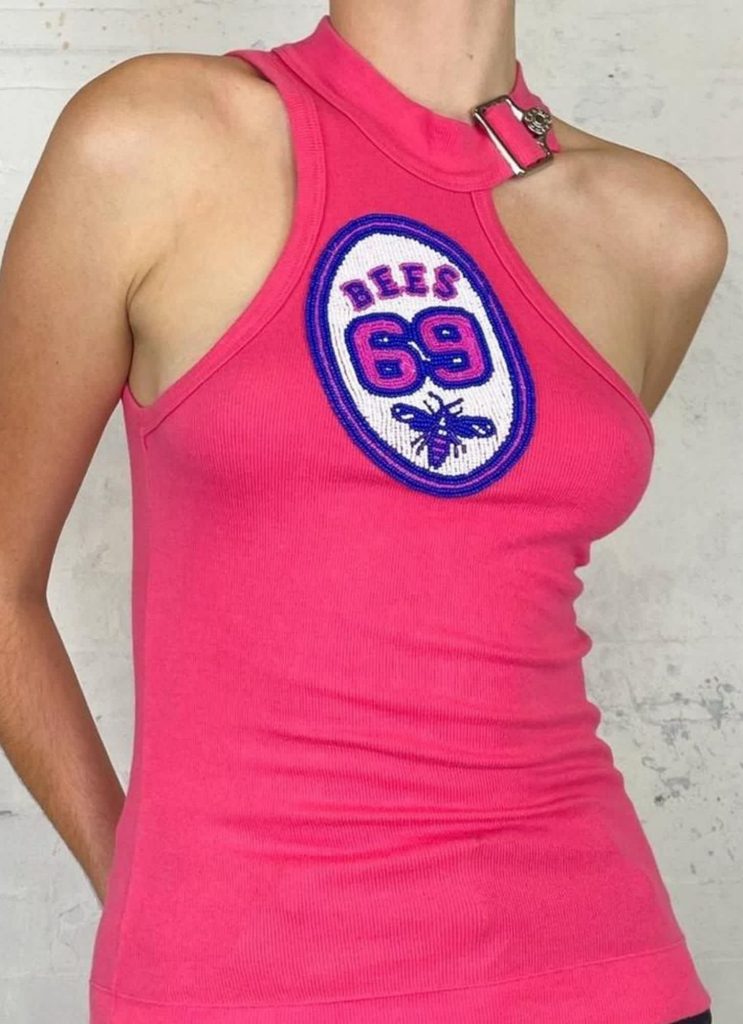
Depop is known for its eclectic, even chaotic aesthetic. But Morison has found more success with clear and consistent imagery.
“I do little focus studies whenever I can,” she says. “While it feels fun to have lots of different images on your Depop, it can actually make navigating your shop difficult for the user.”
As reported by Forbes, online retailers are taking steps to increase accessible shopping experiences for a range of customers. Production company A24’s cosmetics line “Half Magic Beauty” created by Euphoria makeup artist Donni Davy, allows customers to select ADHD friendly, seizure safe, and cognitive disability-friendly e-commerce settings before browsing, as well as screen reading and colour adjustments for shoppers with visual impairment.
Morison confirms that many of the neurodivergent customers and friends she’s chatted to feel overwhelmed by the typical, chaotic Depop aesthetic. She says that while you may not have budget for complex accessibility plugins, there are simple steps you can take to make your shop accessible.
“It might feel fun to have an eclectic mix of photos on Depop, but it’s actually not very effective,” she explains.
Instead, keep things simple: “I shoot everything on a white background, one-shot close up, one-shot far away, one-shot styled, then captions and information down the bottom.”
Customer Service (and Self-Care):
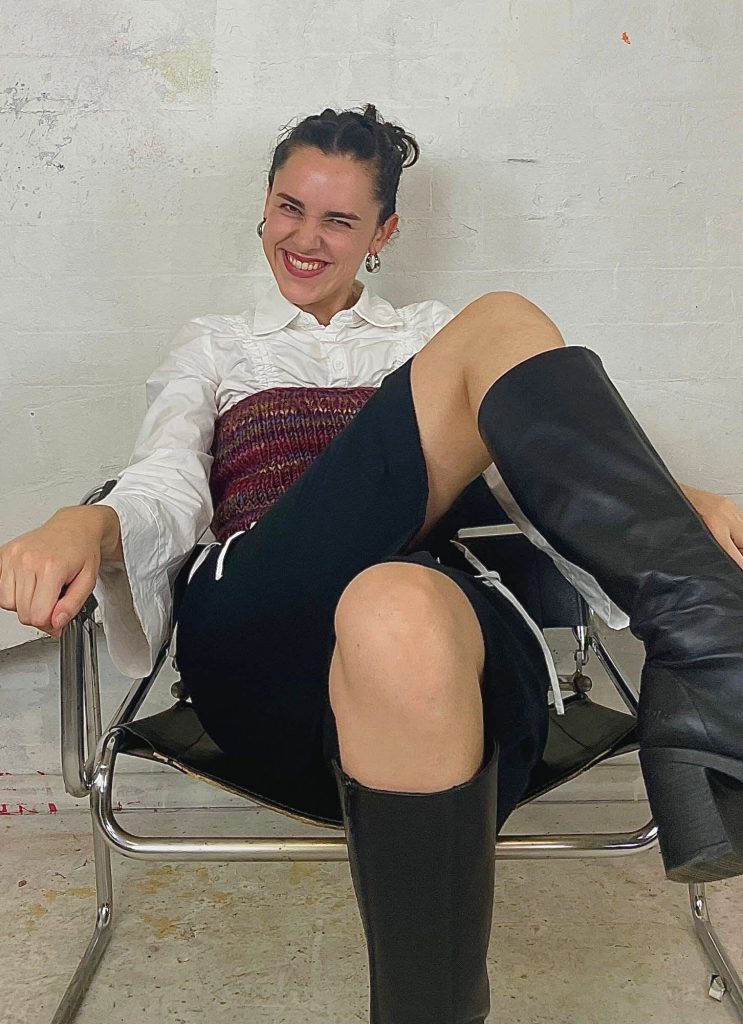
To become a top seller, it is essential to accrue five-star reviews early.
“When you’re not well known, having three-star reviews means people won’t buy from you,” she says.
Getting those five-star reviews requires dedication and, in Stella’s case, a bit of penmanship.
“When I got started, I would send handwritten notes with every order – it was time-consuming, but it established loyal customers and generated five-star reviews,” she shared.
Being responsive to questions, whatever the volume, is key – “always be kind, even if the question is annoying!”
Of course, when your business sees people reaching out to you at all hours, there’s a significant risk is burnout. Morison manages this by putting her own boundaries in place.
“It’s important to be present with people, Morison explains, “when I’m with friends, and I catch myself thinking about a message I need to respond to, or thinking, ‘wow, I need to buy more dresses because we’re coming into summer’, I try and shut that thought down!”
Follow @cusponline for details on IRL pop-ups, market stalls and new drops.


